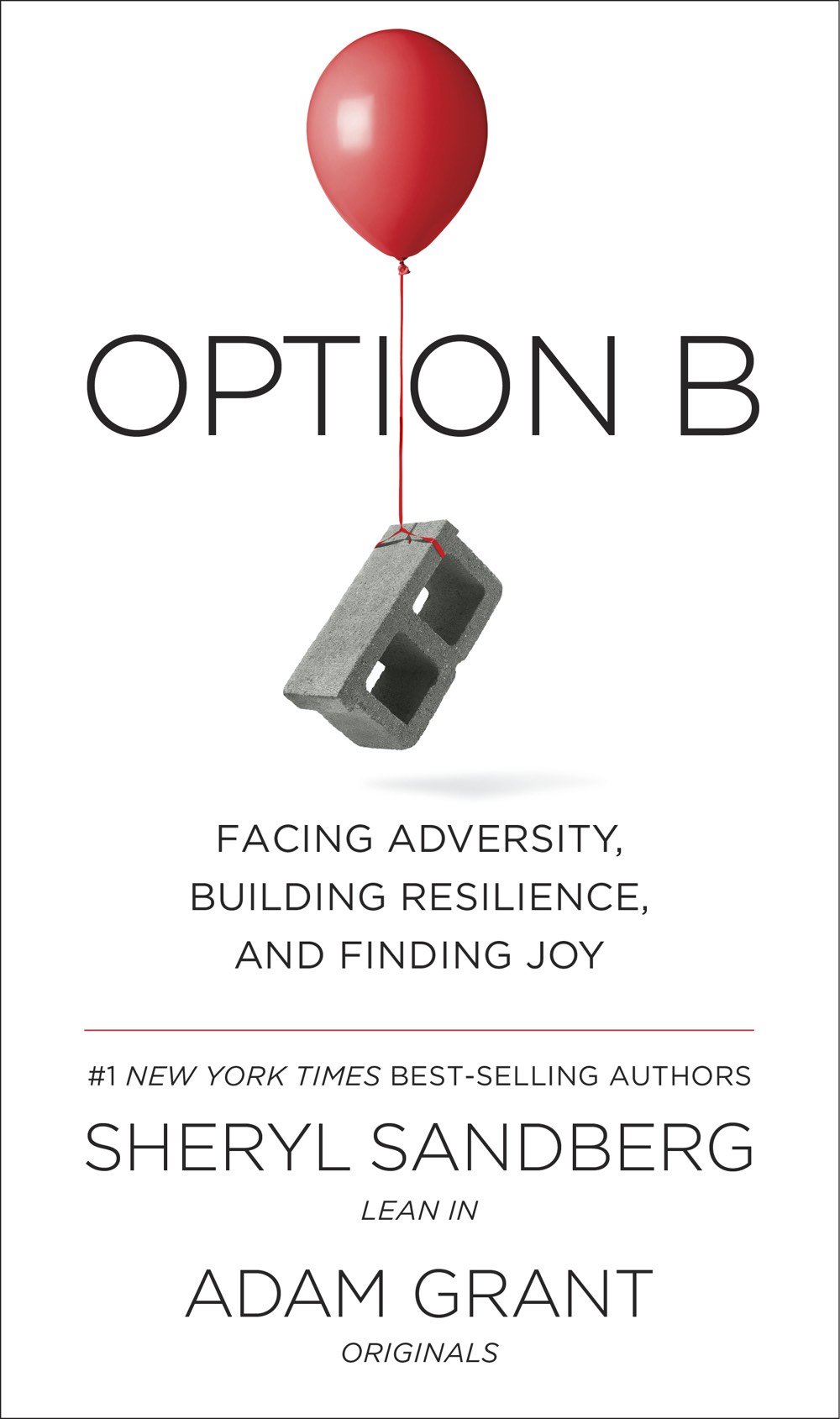Option B: building resilience and finding meaning in the face of adversity
Two years ago, Facebook COO and Lean In author Sheryl Sandberg lost her husband to an unexpected death. The loss left her bereft and adrift. Grieving hard, she struggled to figure out how to move forward with her life. The result of her journey is a book co-authored by Adam Grant called Option B: Facing Adversity, Building Resilience and Finding Joy.
After the sudden death of her husband, Sheryl Sandberg felt certain that she and her children would never feel pure joy again. “I was in ‘the void,’” she writes, “a vast emptiness that fills your heart and lungs and restricts your ability to think or even breathe.” Her friend Adam Grant, a psychologist at Wharton, told her there are concrete steps people can take to recover and rebound from life-shattering experiences. We are not born with a fixed amount of resilience. It is a muscle that everyone can build.
Option B combines Sheryl’s personal insights with Adam’s eye-opening research on finding strength in the face of adversity.
Jessi Hempel’s piece on Sandberg is a good overview on the book and that period in her life, particularly in relation to Sandberg’s return to work and how that changed leadership & communication at Facebook.
Every year in late May, Facebook gathers its policy and communications team for a day-long retreat. Employees fly in from satellite offices in Germany, say, or Japan. It’s a chance to address problems, and set strategy for the year to come.
Sandberg always speaks, but that year Caryn Marooney, who was then in charge of technology communications, remembers everyone told her she could skip it. She insisted on coming anyway. As 200 people looked on, she began telling the group what she was going through, and how it was. “There were a lot of tears. It was incredibly raw, and then she said, “I’m going to open it up to Q and A,” Marooney remembers. People spoke up.
Talking about her situation allowed Sandberg — and the entire team — to move past it and transition into a productive conversation. Having acknowledged the proverbial elephant in the room, they could all focus on the work at hand. “I think people think that vulnerable is soft, but it’s not,” said Marooney, as she described Sandberg’s tough approach to business questions that followed. “It was a blueprint of what we saw from Sheryl going forward.”
Sandberg has also started a non-profit “dedicated to helping you build resilience in the face of adversity — and giving you the tools to help your family, friends, and community build resilience too.”
See also Sandberg’s Facebook post about her husband’s death and her NY Times opinion piece How to Build Resilient Kids, Even After a Loss.
One afternoon, I sat down with my kids to write out “family rules” to remind us of the coping mechanisms we would need. We wrote together that it’s O.K. to be sad and to take a break from any activity to cry. It’s O.K. to be happy and laugh. It’s O.K. to be angry and jealous of friends and cousins who still have fathers. It’s O.K. to say to anyone that we do not want to talk about it now. And it’s always O.K. to ask for help. The poster we made that day — with the rules written by my kids in colored markers — still hangs in our hall so we can look at it every day. It reminds us that our feelings matter and that we are not alone.






Stay Connected